If you’re searching for flooring for a bathroom or kitchen, a waterproof option is a great bonus. And if you’ve got children and a busy household, it can be useful in any room!
But how do you know you’re choosing the right product to meet your needs? And how do you make sense of all the detailed information out there?
That’s where we can help!
We’re going to take you through nine tips to buy waterproof vinyl flooring. And when you’ve made your choice, you’ll never need to worry about splashes or spills again.
So if you’re ready, step this way to find out more …
Table of Contents
1. Be clear about what you need
To start with, consider whether you really do need your flooring to be completely waterproof.
All vinyl flooring is water resistant. That means it will cope with the odd spill or splash. Just clean it up quickly, and your floor is highly unlikely to be damaged.
Waterproof flooring, on the other hand, won’t admit moisture at all. No matter how long it stays on the floor, the construction and appearance should be unharmed.
That’s a high bar, and not all kinds of vinyl flooring can meet it. If this is what you need, vinyl sheet flooring is your best bet. Because it comes in large, thin sheets, you’ll be able to ensure there are no gaps to admit water.
With vinyl planks or tiles, on the other hand, an entirely waterproof floor will be tough to achieve. That’s because of the tiny gaps between one plank or tile and the next. If water hangs about on the floor, it will eventually find its way into those nooks and crannies.
Vinyl planks and tiles do have other advantages over sheet vinyl, though. They’re often considerably more robust. And some will cope much better with an imperfect subfloor than the thin sheet vinyl.
There are some ways to help plank or tile flooring become waterproof through the installation process. We’ll talk about those in a moment. But they will add time and effort. So before proceeding, ask yourself whether you really need a floor that’s waterproof, rather than one that’s merely water resistant.
2. Think about installation …
Proper installation is key to getting a floor that’s waterproof. If you’re using vinyl sheet flooring, the bigger the sheet you can buy, the better. If you can avoid any joins between pieces, that’s better still. No joins means no risk of water seeping between them.
Don’t skimp on adhesive, and invest in a floor roller to ensure the vinyl stays stuck securely to the subfloor. As with avoiding joins, this will eliminate gaps where moisture can find its way beneath the flooring.
The same principles apply with vinyl planks or tiles. If you’re using glue down flooring, apply plenty of adhesive, and press it down firmly over the whole surface. And if you’ve bought a self-adhesive product, you may want to keep a tube of glue on hand to add extra if needed.
With click-and-lock flooring, adhesive can be important too. In normal circumstances, you’d simply lock the tiles or planks into one another, without using glue at all.
But if you want to create a more water-resistant surface, it’s wise to glue it into position. Add glue along the edges too. This will create a watertight seam between the planks or tiles.
Choose an adhesive that’s specially designed for use on whatever material your subfloor is made of. And look for products that have low VOC emissions. You’ll be using a lot of it, so that will ensure it doesn’t adversely affect the air quality in your home.
3. … and maintenance
Vinyl flooring is very easy to look after. Even so, your maintenance regime will be affected by whether it’s water resistant or waterproof.
In either case, a regular brush or vacuum will prevent dirt building up. Particles of dirt and debris often have sharp edges, so this routine will also minimize the chances of them scratching the vinyl.
But when it comes to cleaning, the best options are slightly different for waterproof and water-resistant flooring.
If it’s completely waterproof, you can get to work with a mop and soapy water. And because there’s no risk of the water getting into the core or subfloor, that mop can be as wet as you like.
But if the flooring is water resistant, it’s wise not to add too much moisture to the surface. Wring out your mop so it’s only damp. And don’t be tempted to use steam cleaners. The moisture from the steam can work its way into the tiniest gaps. That can damage the core of your flooring, or the subfloor below.
One option isn’t necessarily more work than the other. But it’s worth thinking about how you’ll look after it before you choose your flooring type.
4. Prepare a budget
Consider how much you want to spend on your floor. Vinyl flooring is available at a wide range of price points, so whatever the answer, you should have plenty of choices.
Measure the area you’ll be covering. And don’t forget to add in at least 10 percent extra for wastage. And remember that different products will come in different sized packages. Check the area that will be covered by each pack, so you know exactly how many you’ll need.
Remember, it isn’t just the flooring you’ll need to buy. You may need tools and materials to prepare your subfloor if it isn’t already smooth and level. That could include a leveling agent, sander or underlay. You may need adhesive. And you’ll probably need some kind of trim for the edge of the floor.
Are you going to install the flooring yourself, or do you also need to budget for labor? If you’re getting an expert to do it, try to get at least three quotes before you book someone. That will give you the peace of mind of knowing you’re getting a fair price.
Take into account all these elements when you prepare your budget. That will give you a realistic idea of the whole project cost. And it will help you set your preferred price range for your vinyl flooring.
5. Plan your layout
If you’re installing your vinyl flooring yourself, it’s a good idea to spend time planning the layout before you start.
Different types of vinyl flooring come in different sizes. If you’re using vinyl sheet flooring, this is less of an issue. But if you’re using planks, you’ll want a layout that avoids the joins in one row sitting next to those in the next. And you won’t want small planks at the ends of rows. These can be fragile.
You may find that planks of one length or width fit your floor space better than another. If you want to reduce the time you spend on installation, finding that out at the planning stage is a big help! Choosing a project with the most convenient dimensions can greatly reduce the amount of cutting you have to do.
6. Consider all the features
As well as the way your flooring resists water, there are lots of other features to take into account. Considering which of these are most important to you will help you select the best product for your needs.
The most obvious thing to think about is the look you want to create. Vinyl flooring can mimic pretty much any other kind of surface. Would you like a floor that looks as if it’s made from wood? Would you prefer tiles with a stone appearance? Or perhaps vinyl patterned like ceramic or porcelain tiles?
If you’re choosing vinyl with a wood pattern, you can get a more realistic result with “embossed in register” flooring. This simply means that the pattern of the wood matches the texture of the tile or plank. It’s sometimes shortened to EIR in product specifications.
You’ll also want to consider the wear layer of your flooring. This is the clear layer that sits on top of the print and protects the flooring from wear and tear. The thicker the wear layer, the more robust the flooring will be.
You’ll also want to check your flooring is suitable for where you want to install it. You may see terms like “on register” (at ground level), “below register” (basement) and “above register (upstairs)”. And if you want to use your flooring with radiant heating, check that it’s compatible.
If you’re considering waterproof flooring, we’re guessing you’re expecting it to get wet. That means another consideration is its slip resistance. Textured surfaces will help provide more grip than smooth ones.
And last but not least, check that your flooring will emit low levels of VOCs. These are Volatile Organic Compounds, and they can be very harmful to health. The FloorScore logo on packaging means that a product has been independently certified as being low in VOCs.
7. Shop around
One of the best things about vinyl flooring is just how much choice there is out there. So don’t be afraid to shop around to get the best deal. Compare specifications and pricing between different retailers, and you may be surprised at how much variation there is.
And don’t be fooled into thinking that a premium price tag necessarily denotes a premium product. Sometimes it does. Often it doesn’t!
So check the depth of the wear layer and the materials used. And look out for the length of the warranty – this is usually a very good gauge of how robust a product really is.
It’s also a good idea to visit online retailers. Not only can you browse lots of products in comfort, sites like Amazon contain invaluable information in customer reviews.
Yes, those reviews sometimes need to be taken with a pinch of salt. But read a range of them, and chances are, you’ll be able to weed out any that aren’t authentic. And you’ll get a good feel for the positives and negatives of different products.
8. Order in one go
We’ve already talked about the importance of planning your layout before you start installation. That will also ensure you know exactly how much flooring you need to order. Purchase it all in one go, and err on the side of caution in your estimates!
Whatever you do, you don’t want to find you run out of flooring before you reach the end of your project.
The irritation factor of having to wait for more to be delivered isn’t the biggest problem here. A much more significant issue is the risk of finding you get flooring from different batches. And that can mean subtle differences in the color of the printing.
So if you want to avoid a two-tone floor, make sure you order the full amount at the same time. That means measuring carefully, and double checking your calculations. And add in at least an extra 10 percent to take account of the material you’ll need to trim off.
9. Don’t forget the extras
We’ve already talked about the importance of budgeting for all the elements you’ll need to install your floor. But it’s also important to think about things like trims when you choose your flooring option.
Will you need to cover a transition to another floor? What about steps?
Some flooring comes with a good range of coordinating trims and accessories. In other cases, you’ll have to search for matching pieces yourself.
The larger the area of trim, the more important this will be. You don’t want to install a beautiful new floor, only to find you can’t find a vital transition piece to go with it.
Time to buy your waterproof vinyl flooring!
That brings us to the end of our round-up of nine tips to buy waterproof vinyl flooring. We hope they’ll prove helpful to you as you search!
Just remember that, as with so much in life, proper preparation will give you a big head start. So think through what you need from your flooring, and plan your budget and layout in advance. You’ll find your project goes much quicker and easier as a result.
Good luck with finding your perfect waterproof vinyl floor – and happy shopping!
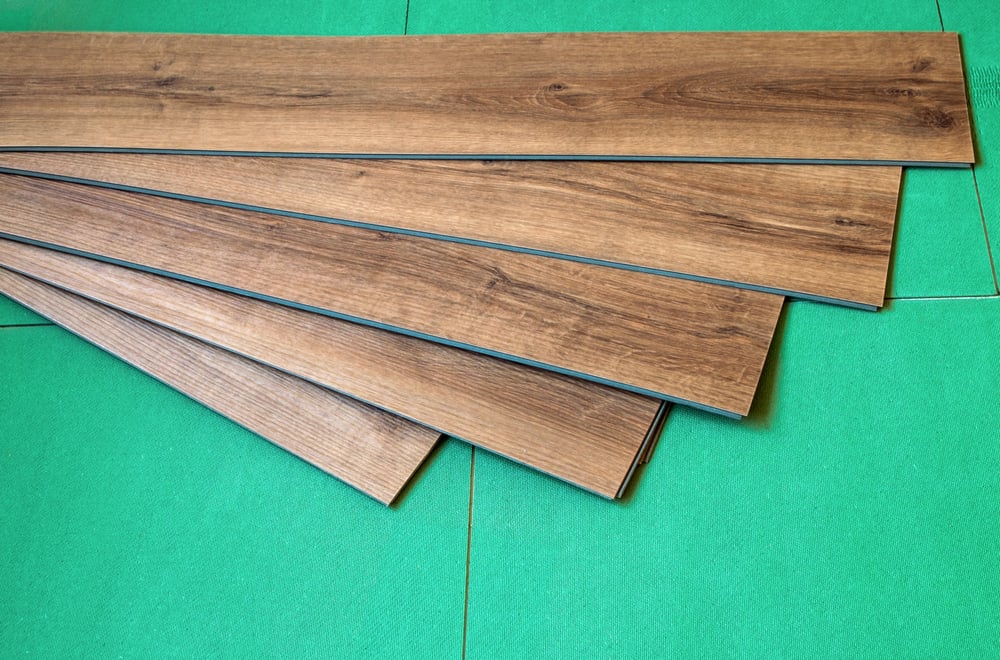
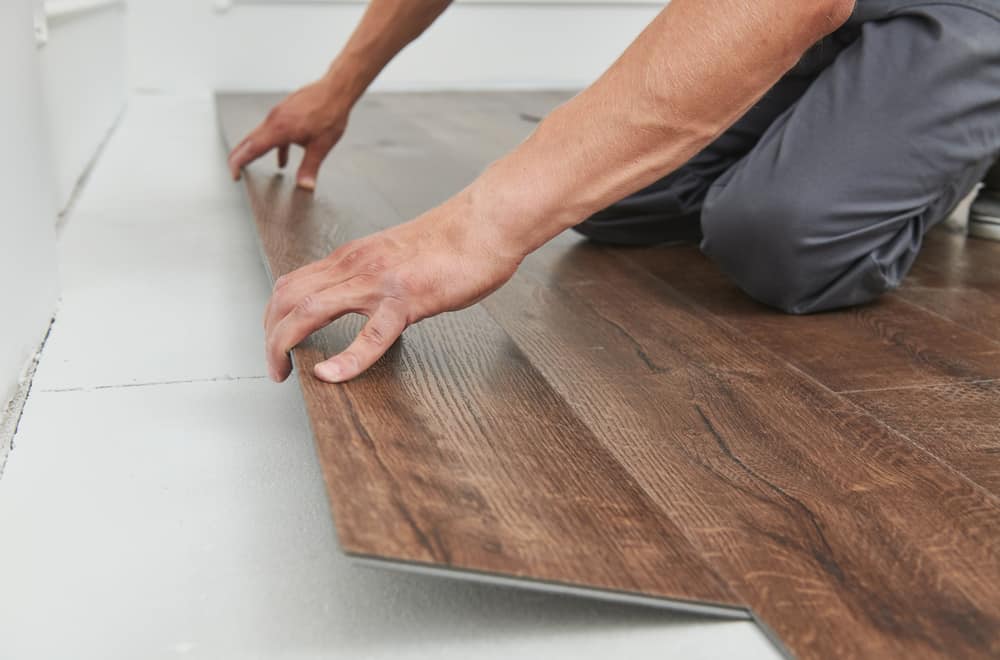
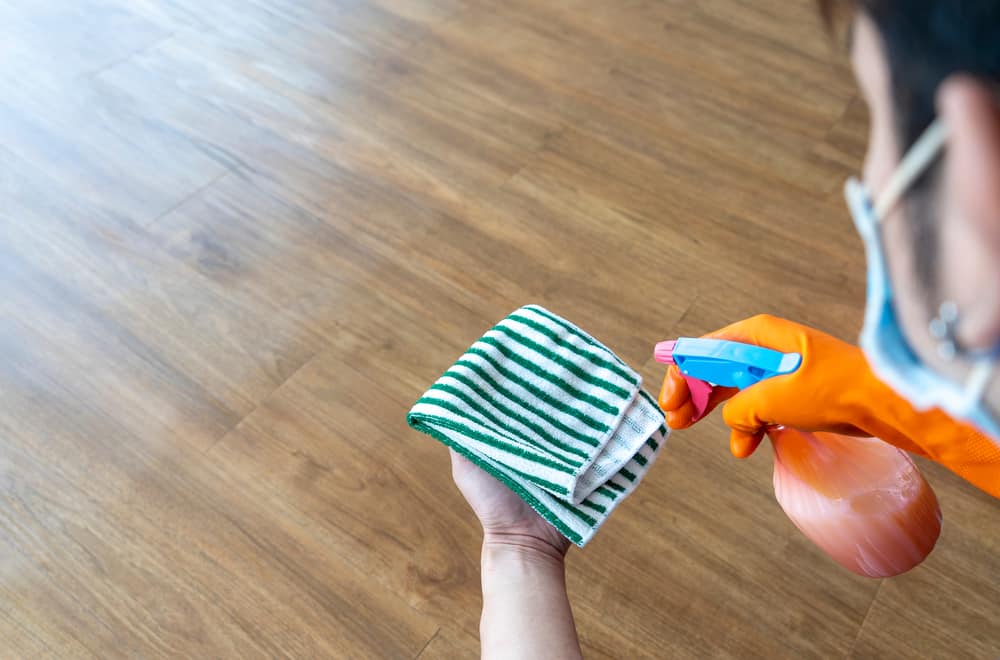
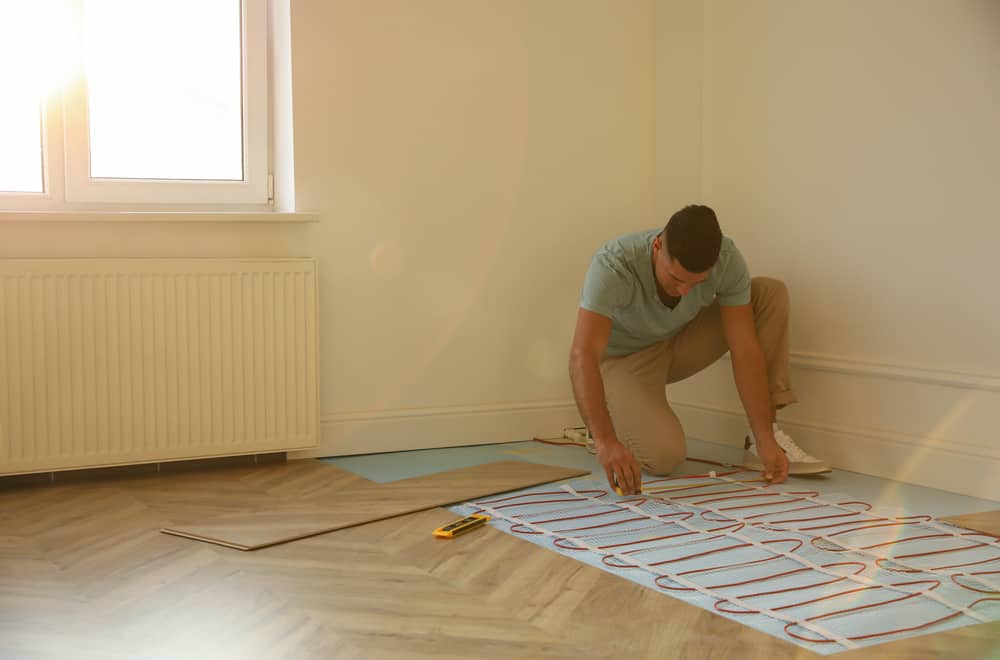
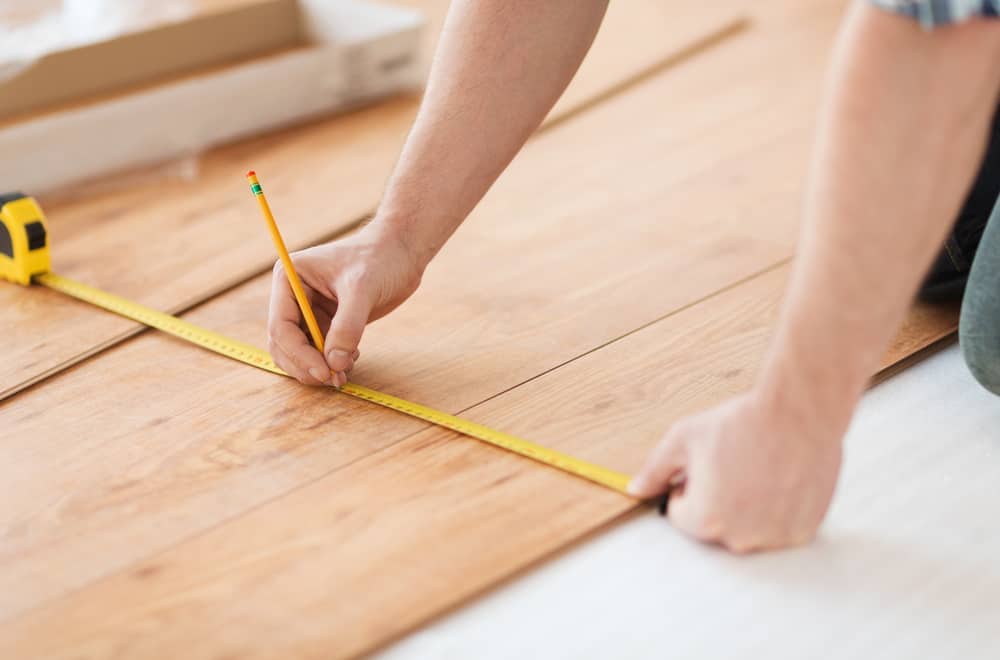
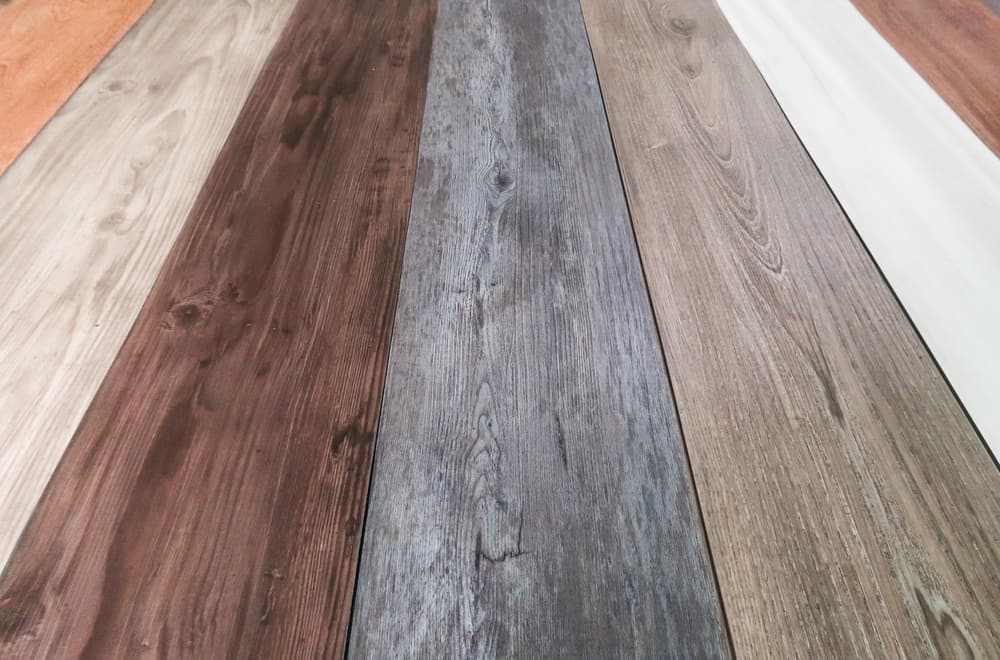
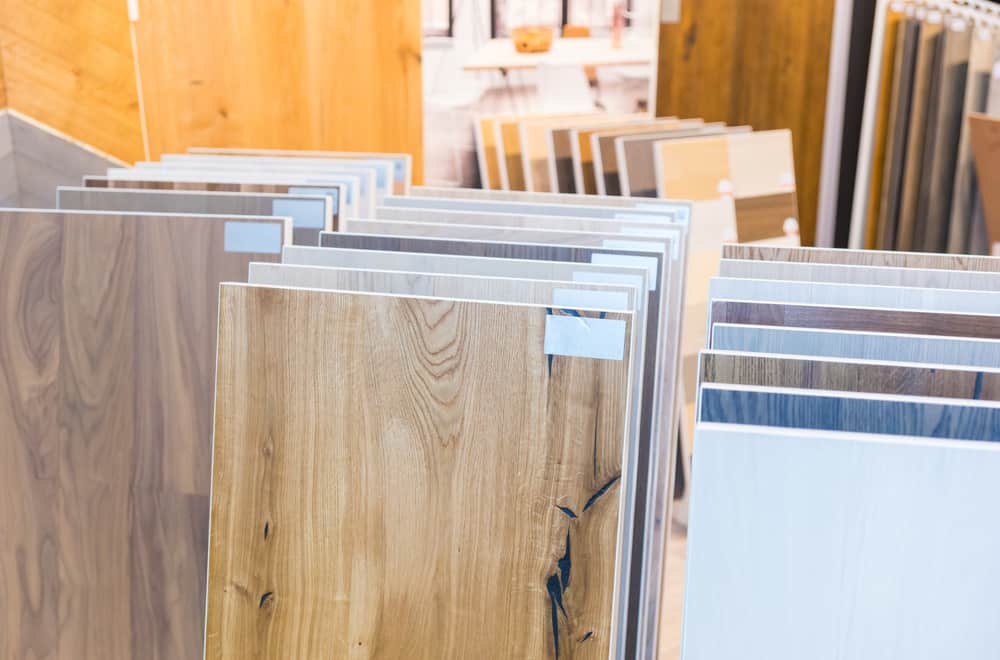

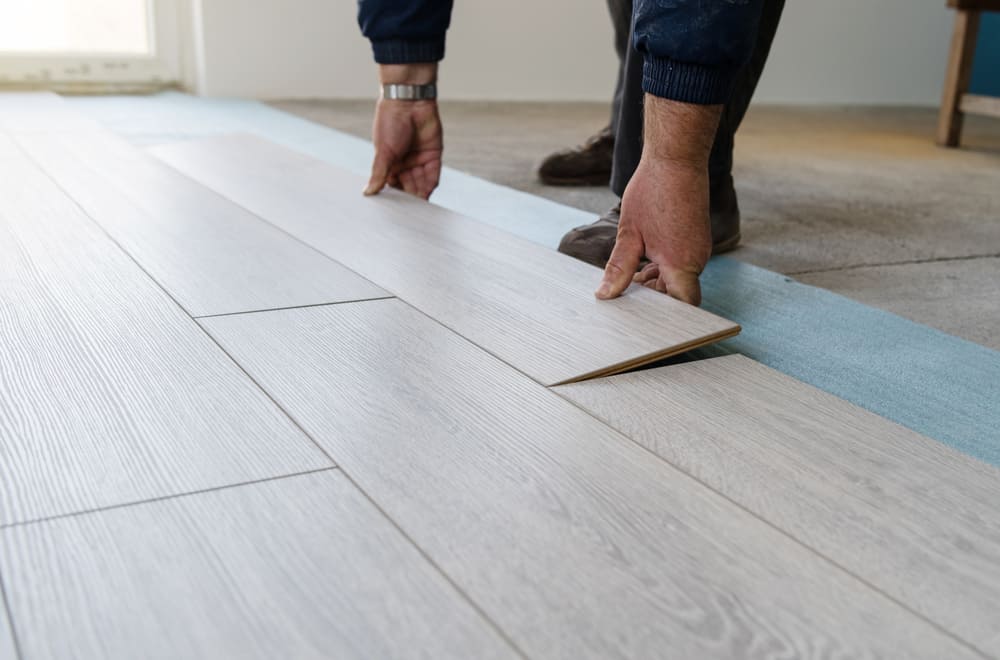
Its great when you said that vinyl flooring is very easy to look after. I want to get some vinyl flooring for my house and I am still looking for some nice designs. Thanks for the information on vinyl flooring and I hope that I can find a suitable flooring service near my area soon.